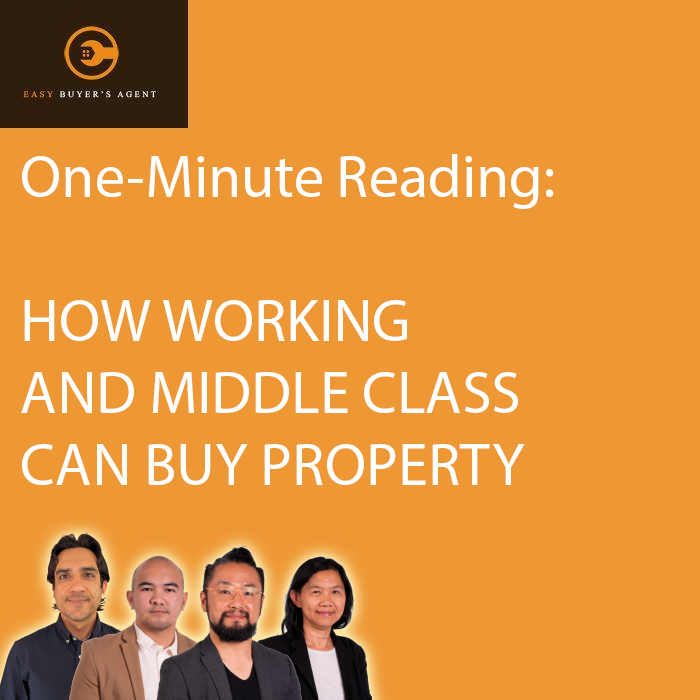ONE MINUTE READING: How Working and Middle Class Can Buy #property
According to Google, In Australia salary classes are generally defined using income percentiles relative to the median salary. The working class typically includes those in the bottom 50% of earners, while the middle class falls between the 50th and 90th percentiles, and the upper class comprises the top 10% of earners. For example, using the 2025 salary data:
– Working class: Up to $90,000
– Middle class: $90,000 – $137,000
– Upper class: $137,000 or more
This article is obviously just my personal view and is general information only which does not take into account one’s personal financial situation.
Let’s face it. One’s ability to buy property is all determined by how much one’s income is so it is really difficult to generalise in one article. But, for the sake of this exercise, let’s use the median salary figure of $90,000 annually. At $90,000, the NET home pay after tax and Medicare Levy is $70,412/annum. This equates to $5867.67/month.
I make the following assumptions:
– The person is a family of 4 (husband, wife, 2 children in primary school)
– The children are not sent to any private lessons
– Renting a 3×2 shoebox within Perth Metro area
– No car loan
– Cooking every day never eating out
Let’s calculate the basic necessities. The utilities consumption figures are based on my own household, living in a 4×2 house on 450sqm land.
– Rent: $650/week = $2600/month
– Electricity usage = $500/2 months = $250/month
– Water usage = $330/3 months = $110/month
– Gas usage = $240/3 months = $80/month
– Groceries = $250/week = $1000/month
– Home Internet = $70/month
– Mobile phones (husband + wife) = $100/month
– Health insurance (family): $450/month
– Petrol = $100/week = $400/month
– Other shopping = $500/month
TOTAL SO FAR: $5560/month
LEFT OVER SO FAR: $307.67/month
Let’s invest the left over to Vanguard earning 7%/year compounding. After 20 years, that money will become $159,924.
Depending on the property price at the time and what type of property the person is willing to buy, $159,924 is sufficient for a deposit.
A $90,000 income for a family of 4 is obviously very challenging. We have not taken into account any sickness, holidays, kids’ lessons, any other shopping, etc. The figures above are what I would say “basic necessities”. We only put $500/month for “other shopping” which would have included eating out, clothes shopping, etc. This in itself is borderline impossible. Eating out as a family of 4 can easily set us back $60-$100 in one seating.
However, if you are young and starting out your career, single with no dependents and you are willing to be discipline and invest your money, by the time you are 40, home ownership will become a reality. An extra $500/month compounded over 20 years through managed fund will make that money to become $420,388 up from $159,924.
When I look back into my own life now, those days when I still lived with my parents, started working when I was 20 years old; had I been more discipline with my own money and not wasting it on a brand new $150,000 BMW, buying $10k bicycle 2-3 times/year (I was really into cycling some years ago), now at 42 years of age, I would have had extra $3m in my bank account.
People say, “Tommy, do not regret. You have enjoyed the money”. But, is it really? Is buying brand new $150,000 BMW “enjoying the money”? No…it’s rather a stupid way of satisfying my own ego. Don’t be like me. I will teach my son now to be more prudent with money.
